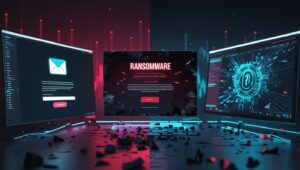You’ve probably seen it in your newsfeed: the U.S. Department of Homeland Security just issued a warning about potential cyber threats tied to escalating tensions with Iran. Maybe you’re thinking, “Is this just more clickbait? Or have we actually got cause for concern?” Or perhaps you’re wondering: “Do I—or my team—have what it takes to face this head‑on?”
You’re not alone. When international tensions heat up, cyber threats almost always rise in step. And it’s not just the big players—government, defence, utilities—that may be targeted. Private companies, healthcare providers, even educational institutions can easily become collateral damage. That looming question, “Could it be my network next?”, is enough to set anyone’s pulse racing.
Here’s the good news: you don’t need to panic. But you do need to prepare. And getting ready doesn’t have to mean shelling out for brand-new cybersecurity appliances or overhauling your entire setup. Sometimes, preparation starts with understanding your risks, reinforcing what you have, and building your team’s confidence—perhaps through a practical online cyber‑security course. Even a single certificate can make you and your team more resilient, more alert, and less reactive when alerts like this come through.
So, here’s what you’ll learn in this blog:
- What DHS is actually warning about—and what they’re not.
- Why Iran’s cyber‑capabilities matter right now.
- The most likely types of cyberattacks you might face.
- Which organisations are most at risk—and which are probably safe.
- What practical steps you can take today.
- Why upskilling (even with short, focused training) could be your game‑changer
What DHS Is Saying and What They’re Not

DHS recently released an alert stating that “pro‑Iran hacktivists or state‑linked actors may target vulnerable U.S. networks.” Notice what that does—and doesn’t—say:
What They Do Say:
- The threat is heightened and real.
- The likely actors include hacktivist groups sympathetic to Iran and state-sponsored teams.
- The targets are vulnerable U.S. networks, implying primary concern around less-secure or under-protected systems.
What They Don’t Say:
- They’re not predicting a massive, focused cyber‑war right now.
- They’re not naming specific organisations or industries—yet.
- They’re not issuing an immediate, critical-level warning (e.g., no signs of a ticking countdown).
In short, DHS is clarifying that any escalation on the global stage could quickly bleed into cyberspace—and their focus is on increasing vigilance and readiness.
Why Iran? Understanding the Cyber Threat Context

Iran has been a major actor in cyber threats since at least 2009. Here’s what makes this warning significant:
- State‑backed sophistication: Iran’s cyber‑capabilities have grown significantly. Teams like the one behind the Shamoon malware outbreak have shown they can disrupt major infrastructure.
- Hacktivist activity: Pro‑Iran groups often operate in loose coordination. They may step up attacks during geopolitical flare‑ups.
- Global alignment: Iran-linked action typically targets Western government, defence, and energy systems—but sometimes hits private sectors too, especially when using ransomware or phishing.
Put simply, the warning isn’t paranoia. It reflects a pattern: rising geopolitical tensions → cyber‑skirmishes start to happen.
Realistic Scenarios: Cyberattacks You Might Actually See

If Iran-linked actors decided to make a splash, here are plausible attack types:
| Attack Type | Description | Likelihood & Impact |
| Phishing/Spear‑phish | Highly targeted emails aimed at employees or executives. Could deliver malware or steal credentials. | High likelihood, potential breach or ransomware trigger |
| Ransomware | Encrypt data, demand payment. Could be financial or purely disruptive. | High likelihood, especially for under-secured SMEs |
| DDoS attacks | Flood websites or services with traffic to disrupt critical operations. | Moderate likelihood—mainly disruptive, unless timed with geopolitical events |
| Website Defacement | Change public-facing websites with propaganda or graffiti. | Moderate likelihood—embarrassing, brand damage |
| Supply-chain compromises | Weaker partners exposed, attackers pivot through trusted relationships. | Moderate likelihood—hard to detect, high damage potential |
Attacks don’t have to be world‑shattering to cause serious damage—downtime, reputational loss, data theft, and operational disruption are all very real.
Who’s Truly at Risk?
According to DHS, these sectors are most likely to face threats:
- Critical infrastructure – energy, water, utilities
- Finance & banking
- Healthcare & public health
- Government agencies
- Educational institutions
- Small‑ and medium‑sized businesses (SMBs) with limited cyber defences
But risk isn’t just sector-based. Any business that’s underprepared or has outdated systems is a target—regardless of its industry.
What You Can Do Right Now

You don’t need to stop everything and spend a month on risk management. Instead, focus on this four‑step action plan.
- Patch and Inventory Right Now
- Identify unpatched systems—especially remote access tools.
- Prioritise fixes for internet-facing servers or software with known vulnerabilities.
- Use automated tools when possible—and ensure your team documents what’s secure and what isn’t.
- Increase Monitoring
- Review security logs more frequently—twice daily if you can.
- Watch for unusual inbound traffic, logged‑in sessions from odd IPs, or attempted password resets.
- If you have a SIEM (Security Information and Event Management) tool, enable alerts for anomalies.
- Educate Your Team
- Run short phishing awareness campaigns using free tools or internal tests.
- Remind staff to hover over links, verify sender info, and report suspicious emails.
- Offer a simple, bite‑sized course or refresher. Upskilling can empower your team—and could even earn them a certificate they’re proud of.
- Test Your Recovery
- Review your backup and recovery systems.
- Run a mock incident response drill—even a simple tabletop exercise helps narrow down weak spots.
- Make sure communications plans are in place in case of a breach—internal and external alike.
Why Cyber Training Isn’t Optional—It’s Essential

Feeling out of your depth? That makes sense. In today’s connected world, small mistakes can have big consequences.
Cybersecurity training—whether basic or advanced—gives you and your team concrete skills like:
- Spotting malicious emails
- Understanding vulnerability importance
- Responding quickly to threats
- Communicating clearly during incidents
It doesn’t need to be a multi‑thousand‑dollar bootcamp. Many respected providers (including SANS, Digived and CompTIA) offer targeted half‑day or multi‑week courses with practical labs, modular content, and even certifications. Imagine your team confidently handling a phishing email or shining during a mock incident—that’s real, measurable value.
also read : which is the best cybersecurity course in Bengaluru?
What to Watch for in the Coming Weeks

Here’s where extra vigilance matters:
- Intelligence feeds & industry reports – Monitor sources like CISA, DHS, and trusted threat‑intel vendors.
- Telltale chatter – Watch for public claims by hacktivist groups or sudden bursts in malware activity.
- Shared disclosure – If one major breach hits the news, prepare for copycat attacks that attempt to piggyback.
If you notice any cluster of phishing going around, or unexpected access attempts in your logs, don’t brush it off. Investigate—better to spend one calm hour now than scramble later.
Staying Resilient—Today and Tomorrow

Let’s recap:
- DHS’s warning is serious but measured. It’s not an apocalypse, but it is a wake‑up call.
- Iran‑linked actors are real, capable, and opportunistic. Their moves may be subtle—smaller, targeted campaigns rather than big blasts.
- Most likely attacks include phishing, ransomware, DDoS, and supply-chain threats.
- You’re not powerless. Patch, monitor, train, and test—even small steps can make a substantial difference.
- Upskilling your team matters. A focused cybersecurity course can turn anxiety into confidence and build real, long‑term resilience.
Final Thoughts

Geopolitics can feel distant—but cyber threats don’t wait around for treaties or diplomacy. They strike at the weakest link, often quietly and opportunistically. That’s why preparation matters. And being prepared isn’t about fear or panic—it’s about being ready. So, take a moment today. Check your patch calendar. Run a phishing exercise. Explore a short cybersecurity course. Even just a few hours of training can shift the dial from reaction to readiness.
The sky isn’t falling—but the clouds are gathering. Be proactive, not alarmed. And know: in cyber‑resilience, the small things you do today can be the difference between disruption and downtime some other day.
“Stay informed. Stay prepared. Cybersecurity isn’t a luxury—it’s your frontline defence”
Feeling ready for more, Consider starting with an entry‑level CEH or Digived’s “Cyber Security Fundamentals” course. They offer great practical grounding in just a few weeks. Visit Digived Academy to learn more about our Cybersecurity Training programs and start your journey as cybersecurity professional today.
Frequently asked questions [ FAQ’s]:
- What is the latest DHS cybersecurity warning about?
DHS has warned of rising cyber threats from Iran-linked actors as geopolitical tensions with the U.S. escalate. These threats could target vulnerable U.S. networks with phishing, ransomware, or DDoS attacks. - How can I protect my business from Iran-related cyber threats?
Start with basic cybersecurity hygiene: update and patch systems, enable multi-factor authentication, monitor logs, and run phishing simulations. Training your team is also key. - Who is most at risk in this cyber threat alert?
Organisations in critical infrastructure, healthcare, finance, and government are most at risk. However, any business with weak cybersecurity defences could be a target. - What are common tactics used in state-linked cyber-attacks?
Common tactics include spear-phishing, ransomware, supply chain attacks, and exploiting unpatched software. These methods aim to disrupt, steal, or destroy data. - Should I take a cybersecurity course to prepare?
Absolutely. Even a basic cybersecurity course can help you recognise threats early, respond effectively, and support your team in staying secure during high-alert periods.
Contact Us
For more information about our courses, schedules, and enrolment process, visit our website or contact us at.
Website: www.digived.academy
Email: admission@digived.academy
Phone: +91-9019299971



